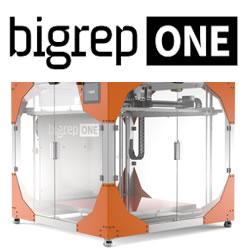How Automation-as-a-Service Combined with AI & AR/VR Is Benefitting Manufacturers

In an era defined by innovation and efficiency, manufacturers in every industry face a pivotal question: how to optimize operations, reduce costs, and increase productivity without compromising quality. The answer today is increasingly found by embracing Automation as a Service (AaaS), a game-changing approach reshaping the manufacturing landscape.
Understanding Automation as a Service
At its core, Automation as a Service (AaaS) refers to the provision of automation solutions as a subscription-based service. It empowers manufacturers to leverage cutting-edge technologies without the burdensome overhead costs and technical complexities. This model allows companies to access automation tools, software, and expertise on-demand, transforming the way production lines operate.
One of the most widely available advantages of AaaS is its ability to streamline various facets of manufacturing. By integrating AR/VR (augmented reality and virtual reality), robotics, machine learning, and AI (artificial intelligence), AaaS solutions automate repetitive tasks, optimize processes, and facilitate data-driven decision-making. Here are a few specific ways manufacturers are leveraging the power of AaaS today:
- Robotic Process Automation (RPA): Manufacturers can deploy RPA to automate routine tasks such as inventory management, quality control, and assembly line processes. AaaS in RPA enables cost-effective, error-free operations, reducing the need for manual intervention.
- Predictive Maintenance Systems: AaaS offers predictive maintenance tools that utilize sensors and data analytics to foresee potential equipment failures. This proactive approach minimizes downtime, extends the lifespan of machinery, and optimizes operational efficiency.
Combining with Immersive Mixed Reality
Augmented Reality/Virtual Reality (AR/VR) and Automation-as-a-Service can be powerful tools when integrated into a manufacturing operation. More specifically, AR/VR can be utilized for immersive training experiences. Automation processes can be showcased in a virtual environment, allowing employees to learn about complex machinery and processes without the need for physical equipment. This reduces training time and minimizes errors in learning, while Automation-as-a-Service can provide the necessary infrastructure and tools for creating these AR/VR training modules.
AR can also offer real-time guidance through remote assistance by overlaying instructions onto physical equipment. Through AR glasses or devices, technicians can receive visual cues and instructions to perform tasks efficiently. Automation-as-a-Service can assist in the integration of these systems, enabling remote monitoring and troubleshooting of automated machinery. Maintenance tasks, repair instructions, and system optimization can be displayed through AR interfaces, while Automation-as-a-Service can facilitate predictive maintenance, identifying potential issues before they cause significant disruptions.
AR/VR can also create simulations that help engineers and operators visualize the entire manufacturing process, enabling them to identify potential bottlenecks or areas for improvement. Automation-as-a-Service can be used to manage and simulate different automation scenarios, allowing for optimized manufacturing processes. This can also be extremely effective in virtualized training environments.
Lastly, AR/VR solutions can assist in quality control by overlaying specifications or guidelines onto the production line. Automation-as-a-Service can ensure that automated systems are programmed to maintain high-quality standards, working in tandem with AR/VR for real-time quality checks.
How generative AI creates additional benefits
And when it comes to AI, today’s focus on Generative AI is giving even more power to manufacturers leveraging AaaS. ChatGPT is the latest technology driven by AI that uses natural language processing. It leverages deep learning algorithms to enable users to converse with chatbots. What has captured the attention of manufacturers, designers and engineers is that it is an advanced system that can understand complex questions and provide very accurate answers almost immediately. Because it was developed with conversational AI capabilities, it can immediately comprehend user queries and generate natural-sounding responses that are tailored to the conversation context. It also has built-in memory capability that stores information from past conversations to better respond to subsequent messages.
Today’s leading manufacturers are building AI-models like ChatGPT to help create virtual worlds in the metaverse to run simulations and increase productivity/efficiency metrics. More specifically, AI tools like ChatGPT and the metaverse can help create a 3D environment that replicates the real world, and the data used can be harnessed for analysis, running simulations and interacting with data more efficiently.
Overall, AaaS in manufacturing streamlines operations, reduces costs, and increases productivity by enabling access to advanced technologies without the capital expenditure and technical complexities of setting up and maintaining these systems internally. This deep level operational strategy allows today’s manufacturers to focus on their core competencies while leveraging the benefits of automation. Combined with other advanced technologies such as AR/VR, AI and IoT, manufacturers across a number of industries will realize true competitive advantages and become category leaders of tomorrow.
Dijam Panigrahi is Co-founder and COO of GridRaster Inc., a leading provider of cloud-based AR/VR platforms that power compelling high-quality AR/VR experiences on mobile devices for enterprises. For more information, please visit www.gridraster.com.
Comments (0)
This post does not have any comments. Be the first to leave a comment below.
Featured Product

